Great wildflowers for your dry landscape
by Claudia Larsen
If you have added wildflowers to your landscape, you’ve probably learned how adaptable they are to a wide range of environmental conditions. Although it is a challenge to introduce wildflowers to a dry site, many species will adapt and flourish once established.
According to the Florida Native Plant Society Suncoast Chapter’s landscape manual, The Right Plants for Dry Places, all Florida counties from Levy, Marion and Volusia south to Broward County are considered dry. Other counties have many dry areas where development has traditionally occurred. Typically, your landscape qualifies as “dry” if puddles disappear within a few minutes after a heavy rain.
All the following wildflowers can be grown throughout Florida. Some wildflowers prefer 8 to 10 hours of full sun per day and thrive in the heat. The best examples are found on beaches, but these plants can also be used inland to fill large beds with continuous color from summer through fall:
Beach or dune sunflower (Helianthus debilis) — Succulent green leaves support bright yellow 2-inch flowers on a plant that covers a 3- to 4-foot area. Although it spreads, this plant varies in height from 6 to 18 inches, depending on the source of seeds. It will reseed dependably in Central and South Florida.
Plants whose habitats are open sunny areas in sandhills or flatwoods can make a nice addition to your landscape while being drought-tolerant. These plants typically bloom for three to six weeks, so combining several species will ensure longer blooming and an interesting diversity. There are many species that fit here – here are just a few of my favorites:
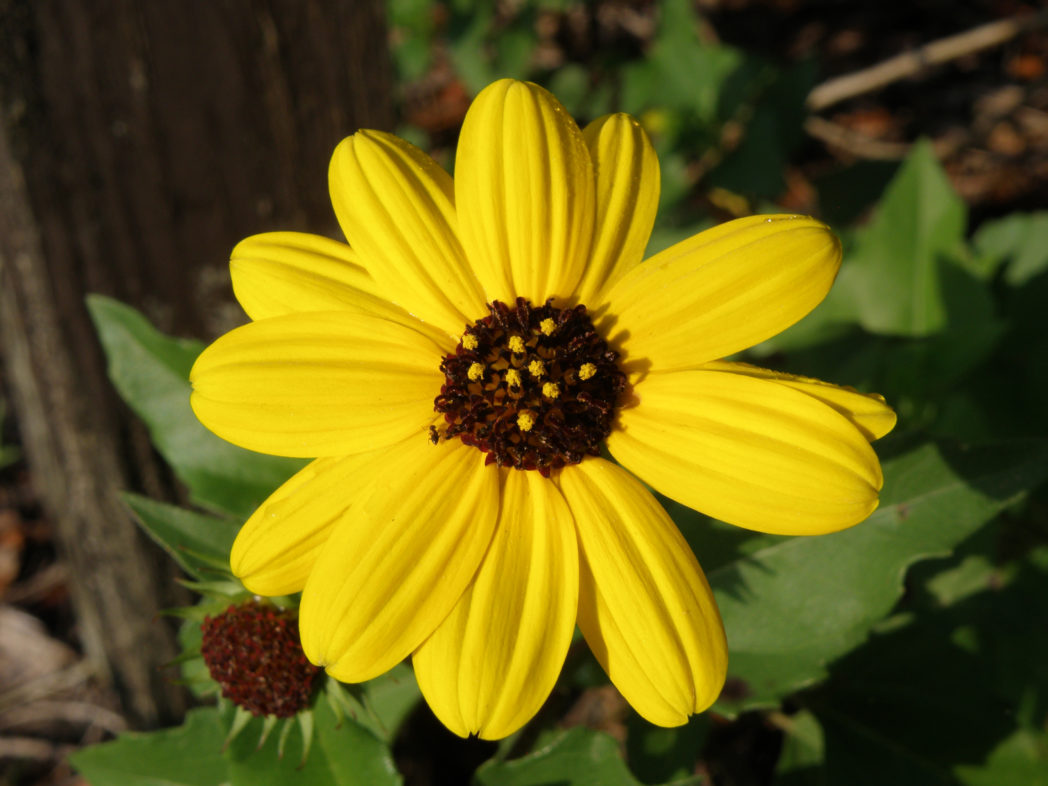
Butterfly milkweed (Asclepias tuberosa) – We all love orange milkweed for its ability to attract Monarch and Queen butterflies, but it is also valuable as a long-blooming garden plant for dry sites. Each flower cluster consists of many small orange flowers with downward-curving petals. Although evergreen in South Florida, the long taproot assists in its drought durability and stores energy for its perennial reappearance each year in other parts of the state.
Bluecurls (Trichostema dichotomum) – Bluecurls forms a mist of light blue with its delicate airy appearance of small flowers with long feathery, curved stamens on a 1- to 3-foot plant. It is a short-lived perennial that blooms in late summer but will reseed prolifically if the soil below is unmulched. This member of the mint family is popular with bees and small butterflies.
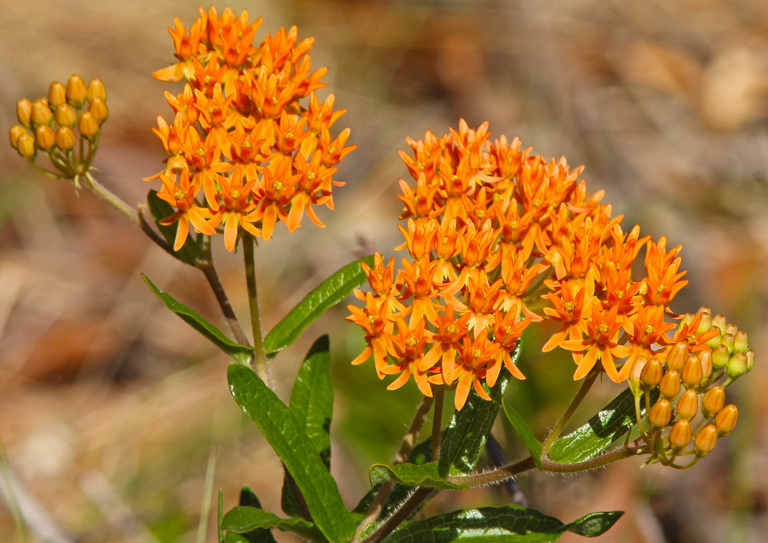
Paintbrush (Carphephorus corymbosus) – Dry pinelands are where you will find this beauty in the fall. It is a lovely companion plant for clumping grasses such as Lovegrass and Lopsided Indian grass. Thick, leathery basal leaves grow in a rosette and gradually form larger clumps. The 18-to 30-inch single flower stalks have flat-topped inforescences studded with bright purple-pink disk flowers.
Goldenaster (Pityopsis graminifolia) – If you are lucky to have gopher tortoises on your property, you may already have Goldenaster growing as its food source. This colony-forming plant spreads by underground stems and has nice silvery, lance-shaped foliage that makes a low groundcover. In fall, 1- to 3-foot spikes of bright yellow, half-inch flowers appear on multi-branched stems.
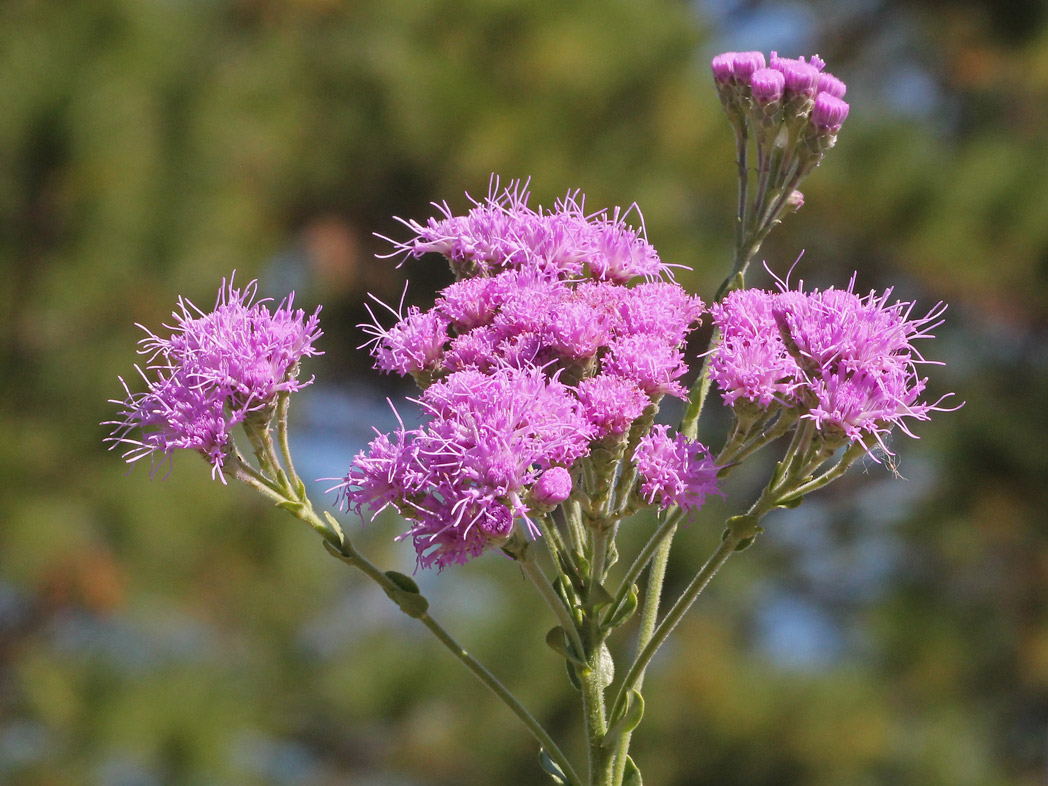
Greeneyes (Berlandiera spp.) – This member of the aster family is one of the earliest plants to bloom in my North Central Florida garden in spring. Flowers occur in single heads with yellow ray flowers radiating around the central green disc or “eye,” giving the plant its nickname. Greeneyes grows 1 to 2 feet high and may bloom intermittently throughout the summer and fall in South Florida. Its long taproots contribute to its ability to thrive in dry locations.
White beardtongue (Penstemon multiflorus) – This member of the snapdragon family has white flowers on terminal panicles that are supported above lance-shaped basal leaves in a clumping rosette. This summer bloomer may also attract hummingbirds. It makes striking statement when planted in groups of five or more.
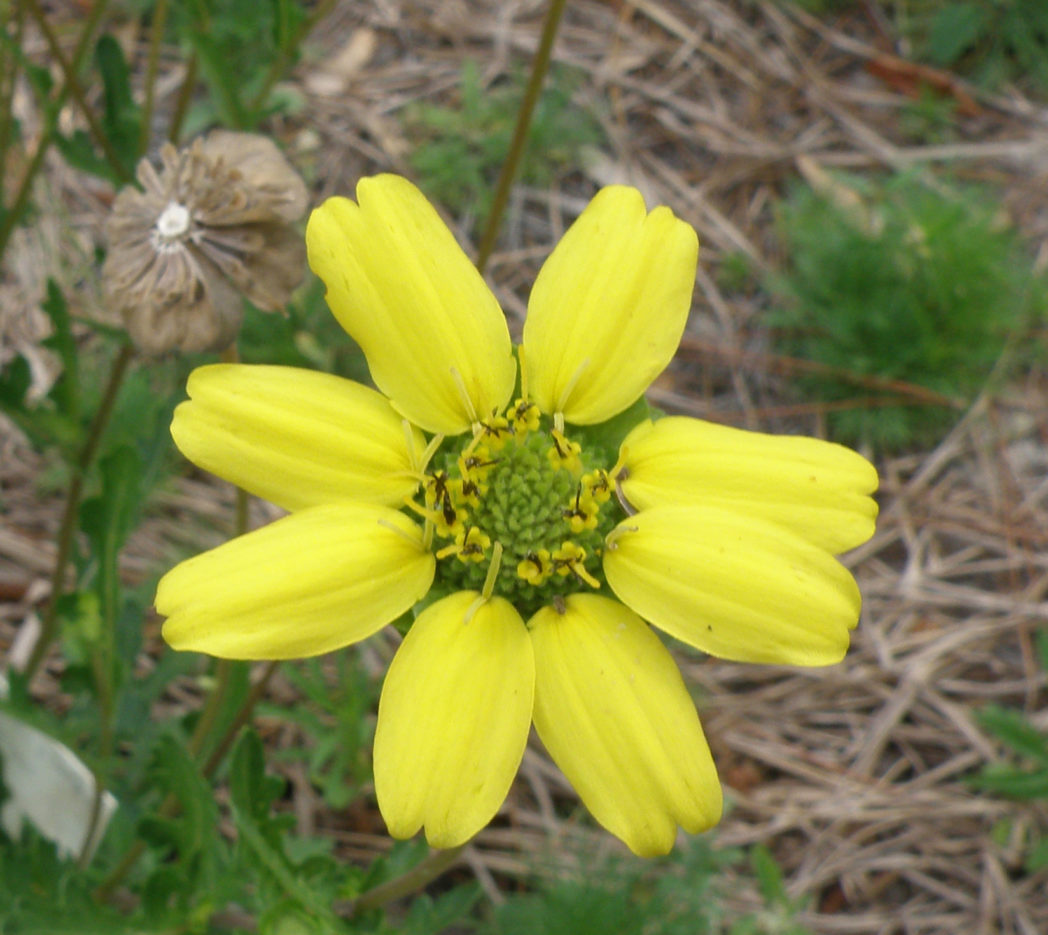
We consider sunny landscapes as dry, but partial and full-shade landscapes also can qualify. They can be difficult to landscape with wildflowers because they tend to be more open in nature and may have natural leaf mulch. Try these species:
False petunia (Ruellia caroliniana) – This low growing plant might spread too much in fertile moist soil, but it is easily controlled in dry, shady locations. The light-blue petunia-shaped flowers create a cooling effect under dappled shade of oaks. (False petunia also grows well in full sun, where it forms a compact 8-to 10-inch mound that blooms throughout summer.)
Frostweed or white crownbeard (Verbesina virginica) – The Florida Museum of Natural History in Gainesville recommends this little-known plant as a pollinator magnet. Frostweed’s natural habitat is shady hammocks, where it grows to 3 to 4 feet, but it does well in sunnier locations, too. The flowers are a cluster of white with green central discs. The large, coarse, scalloped leaves may be more adapted to the background in a bed or a forest-edge planting where it can form colonies.
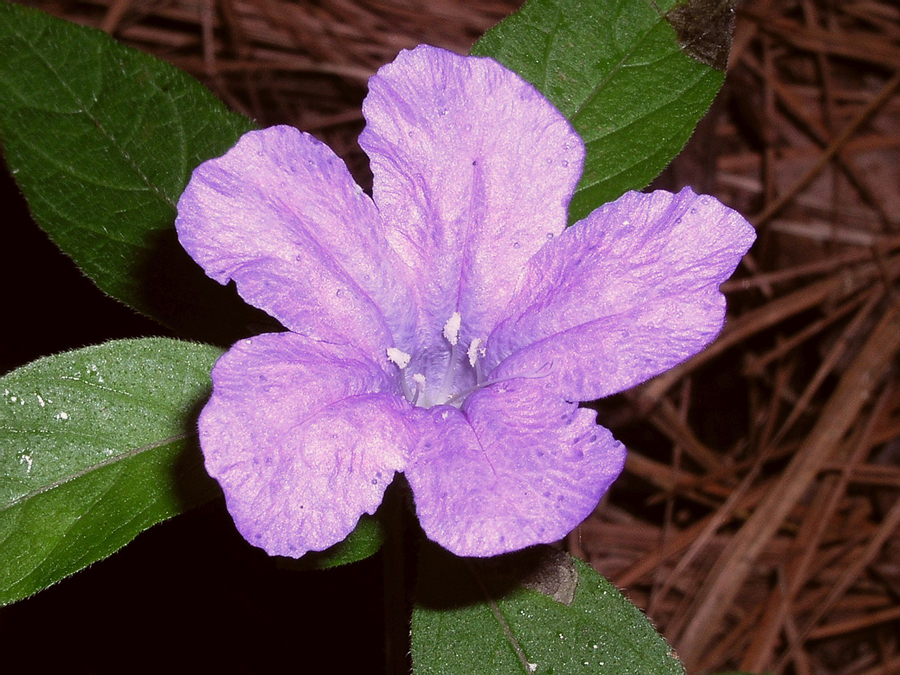
Even with drought-tolerant plantings, remember that your garden may need supplemental water during prolonged times without rain. If plants look wilted and do not recover overnight, an application of one-half to three-quarter inches of water will renew vigor. Light mulching can help reduce evapo-transpiration and reduce wilting. Some perennials go dormant in the heat of summer, dying back to roots waiting for cooler fall or winter weather, when they will produce fresh leaves.
By finding which plants are best suited to your dry areas, you can concentrate them in your plantings and create a great visual display that you can enjoy rain or shine!
Claudia Larsen owns and operates Micanopy Wildflowers, a native-plant nursery in Micanopy.
FIND SEEDS: www.floridawildflowers.com
FIND PLANTS: PlantRealFlorida.org
